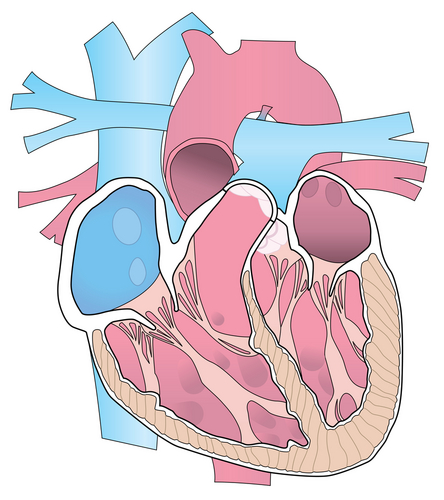As you know, our circulation system includes the heart, lungs and blood vessels, such as arteries and veins.
The blood is simply our delivery system - it contains dissolved substances, either being delivered to the body's organs or being removed from them as waste. In addition, it has a job to do in protecting us from infection.

The heart is the organ that keeps the blood moving. It's made of muscle that squeezes and pushes the blood around the body, pumping around 100,000 times every day!
The heart pumps blood into the arteries and these pick up substances to deliver to all the organs of the body.
Inside the organs, the arteries split into smaller and smaller blood vessels - the smallest ones are called capillaries (thinner than the hairs on your head!) and these supply each individual cell in the body.
The blood is then pumped back to the heart in veins, getting rid of the wastes from the cells on the way: urine to the kidneys, carbon dioxide to the lungs - that sort of thing.

Our heart rate changes during exercise to pump more blood to the lungs and muscles, as there is a greater demand for oxygen and food, as well as a need to remove the extra wastes generated.

So, let's use this activity to help us to firm up our understanding of our circulatory system and also to extend what we already know in preparation for the biology course ahead.








